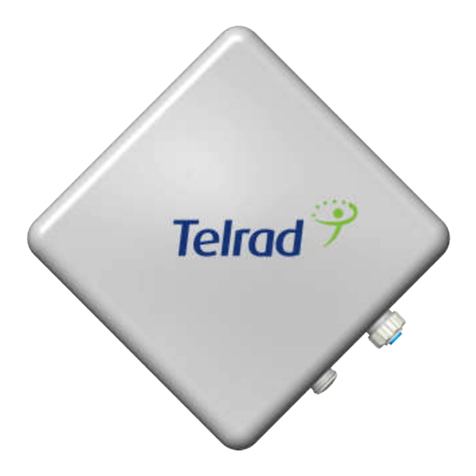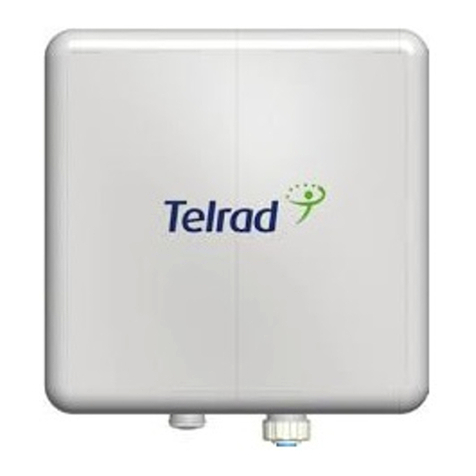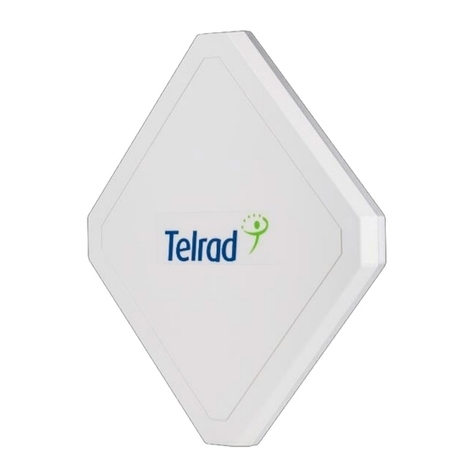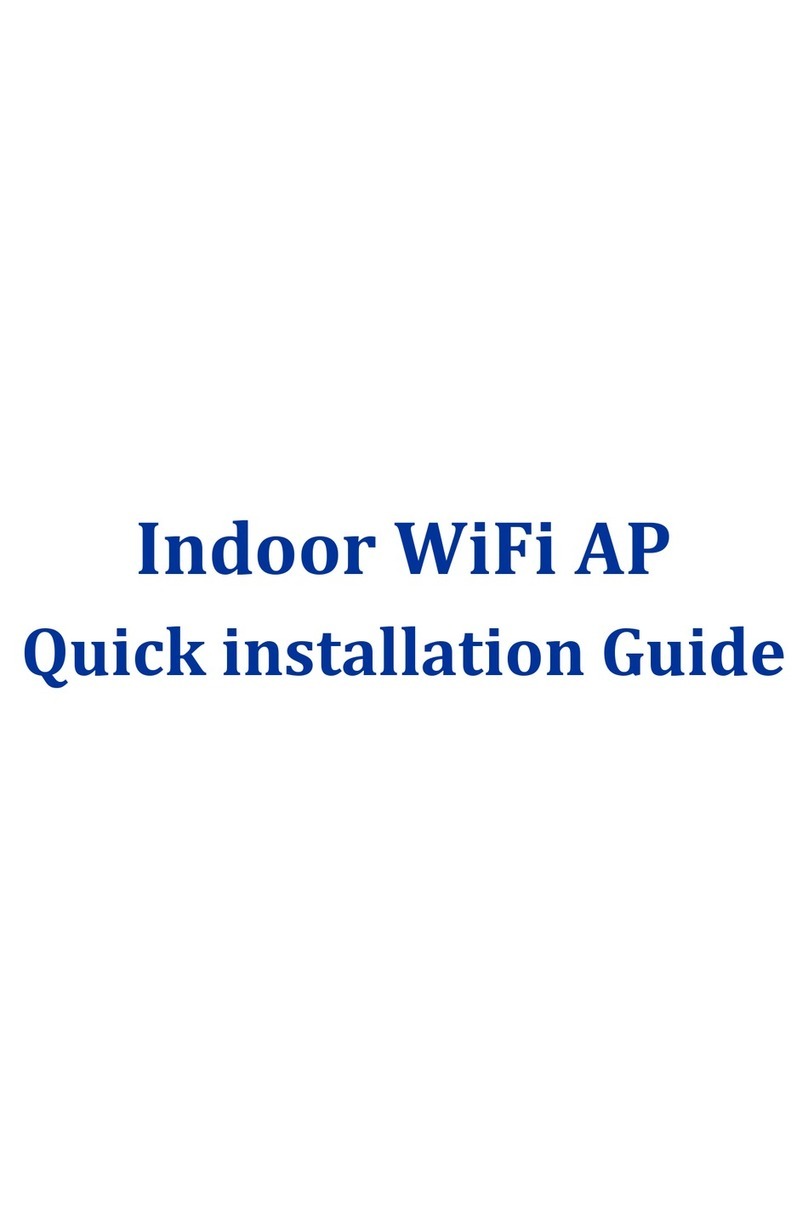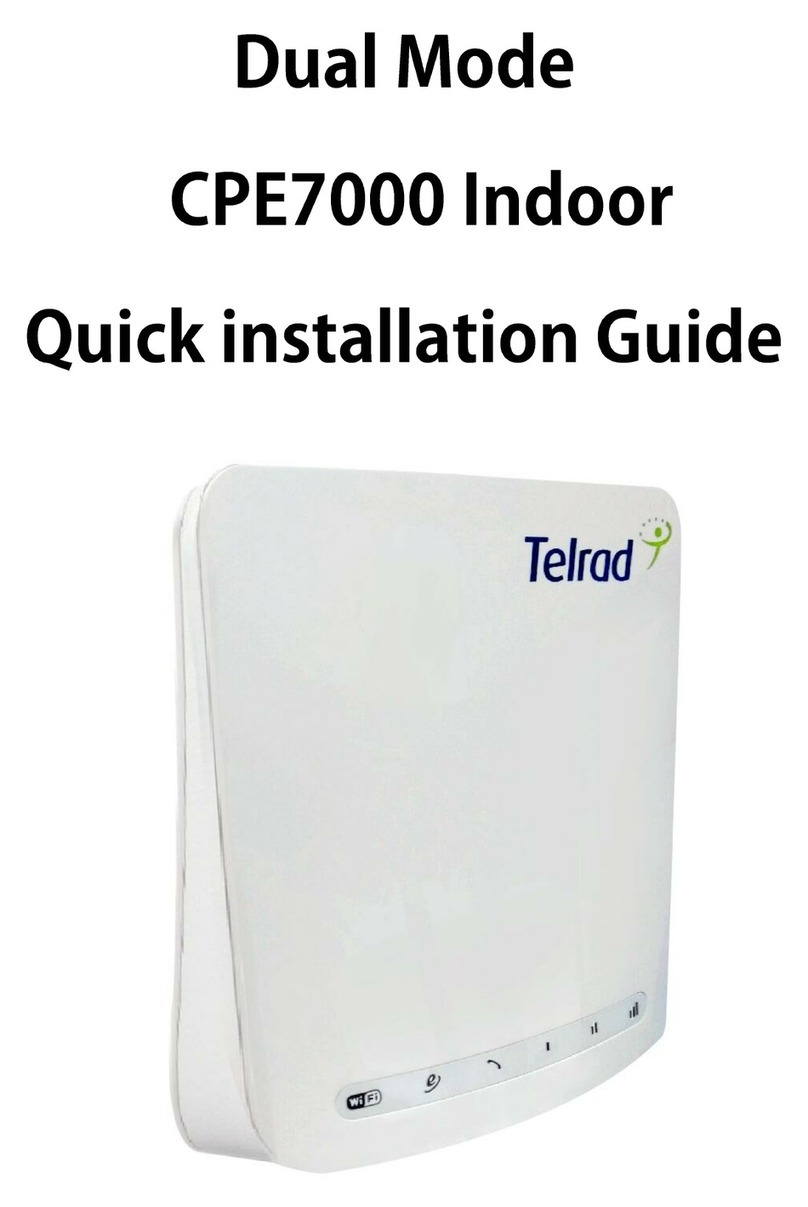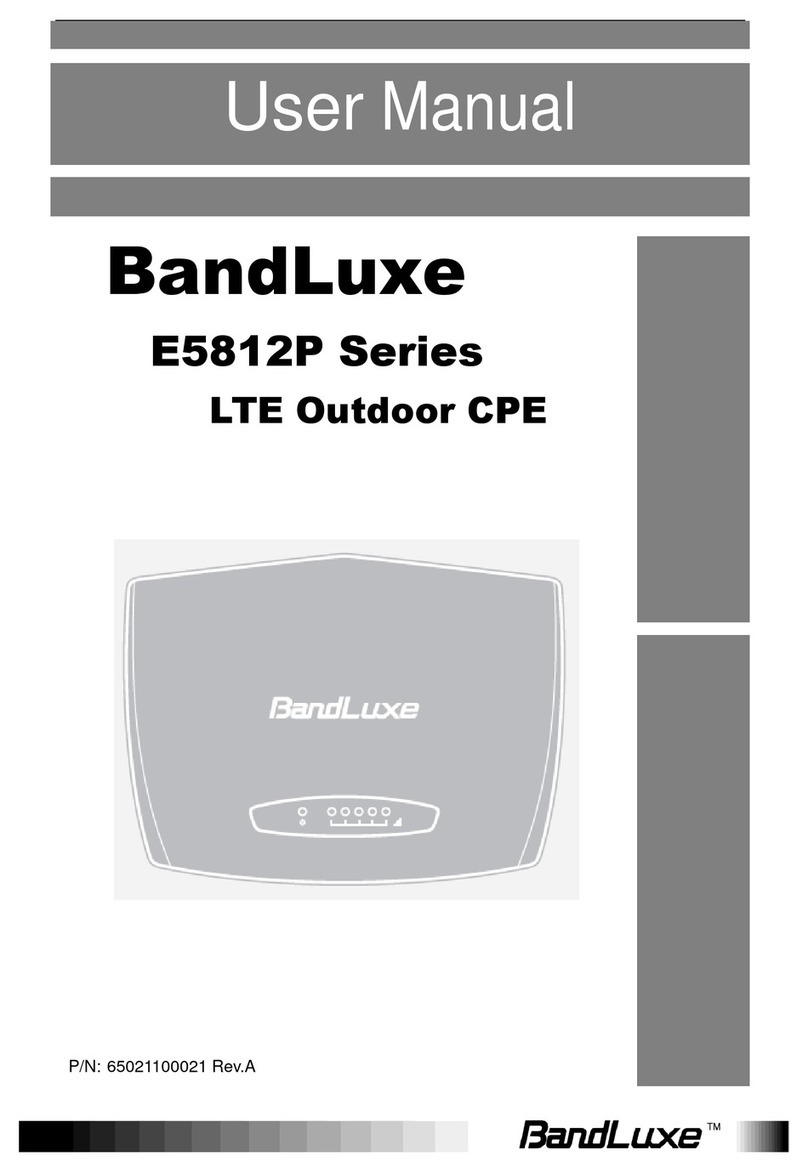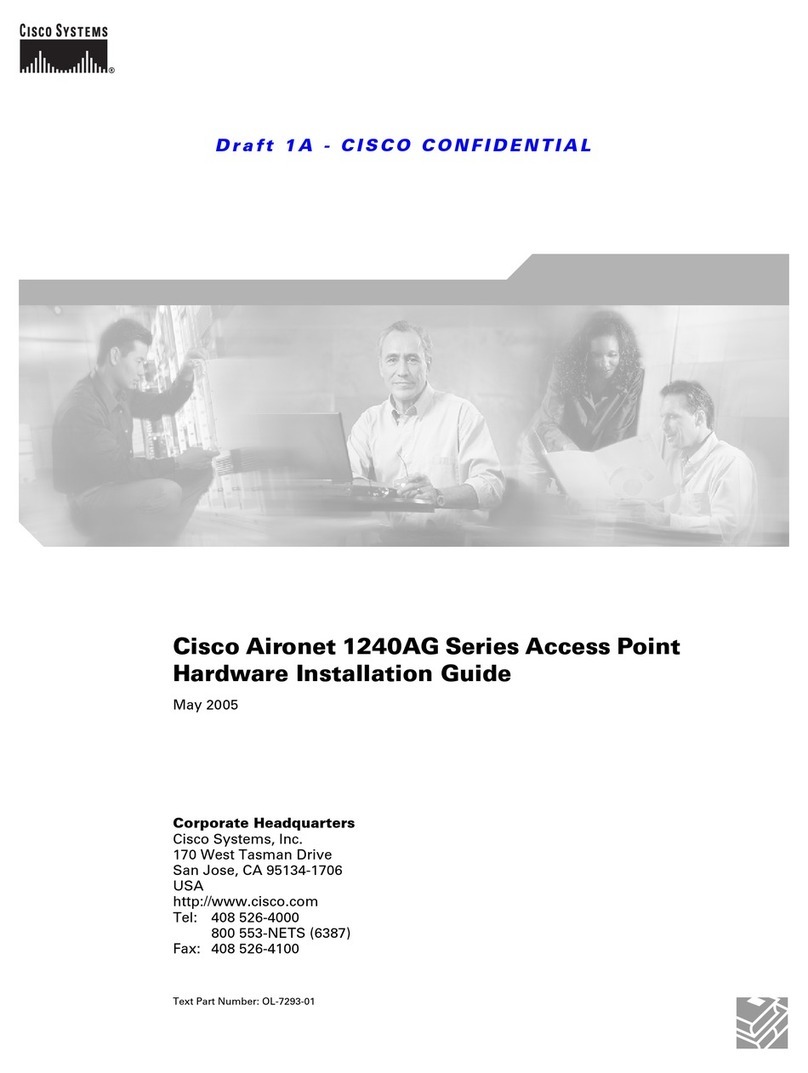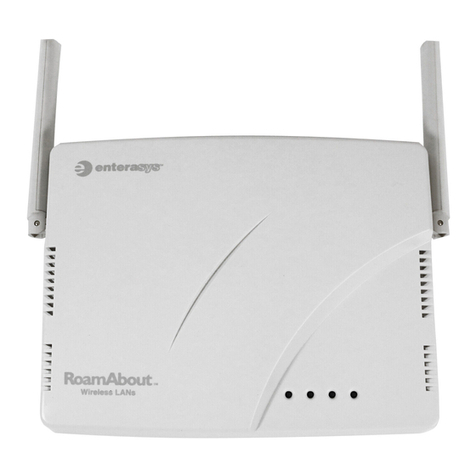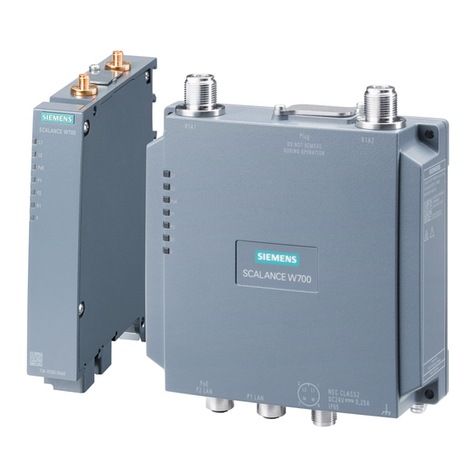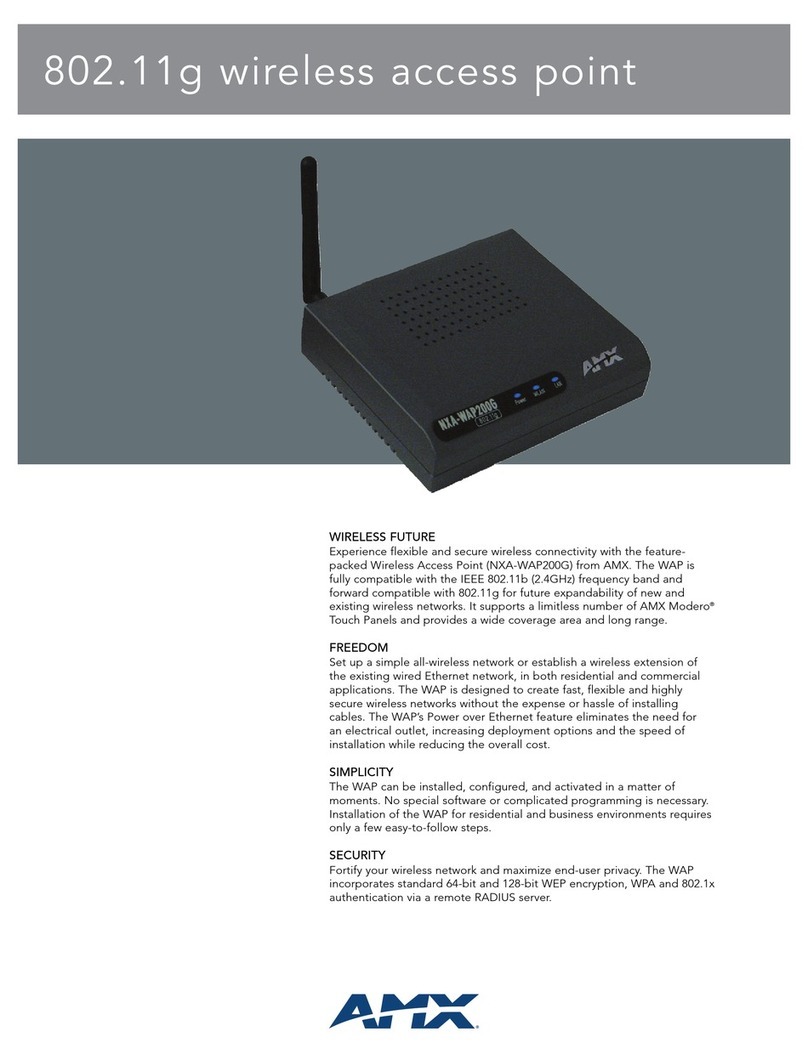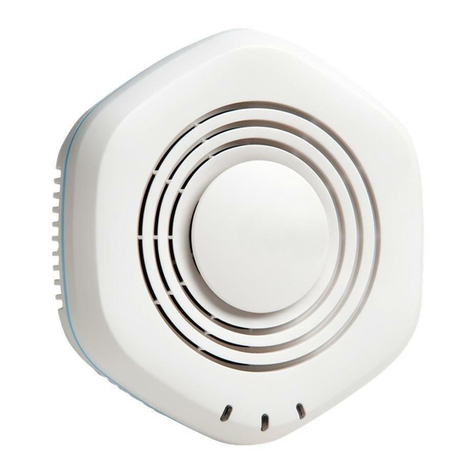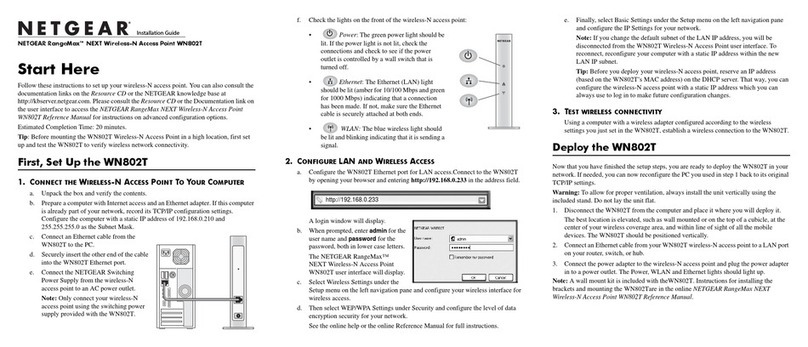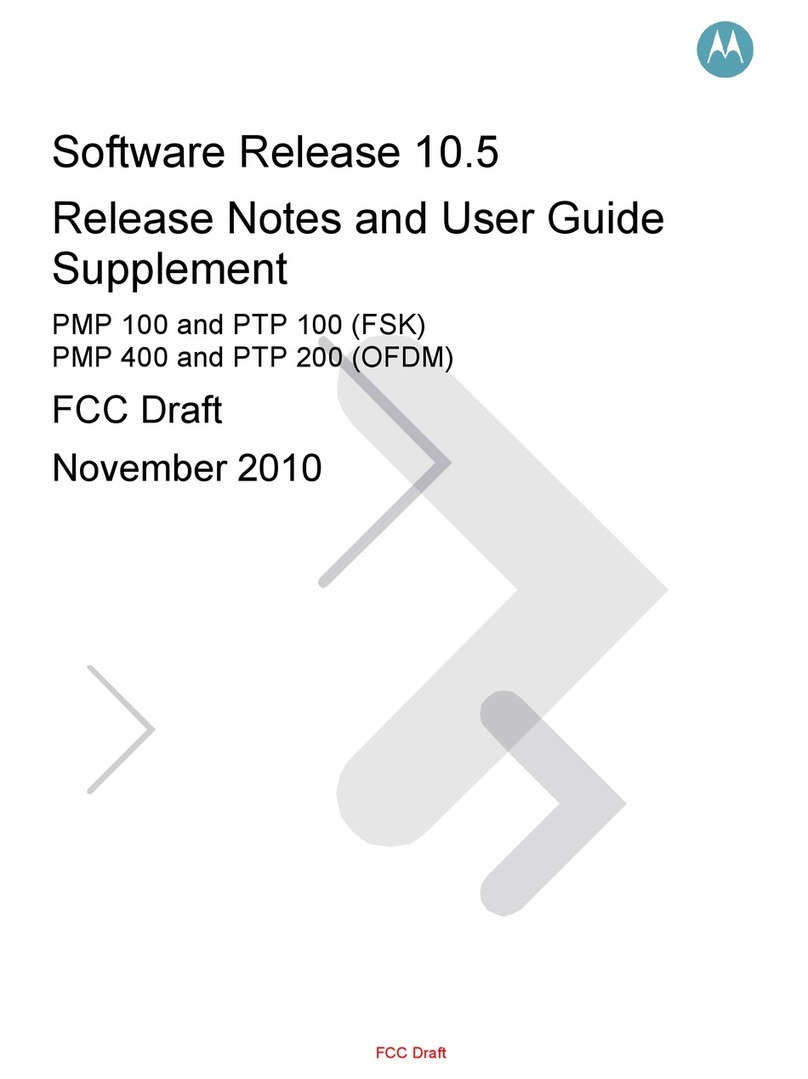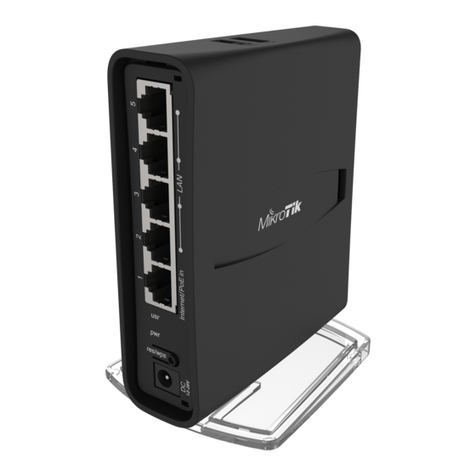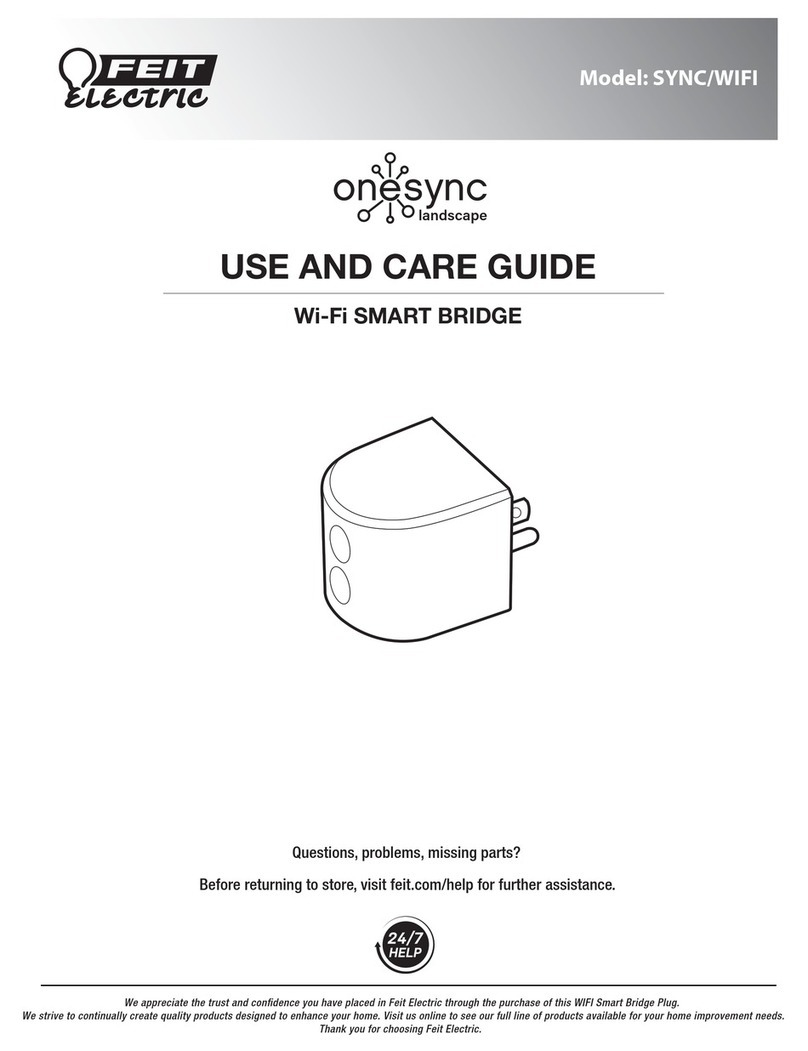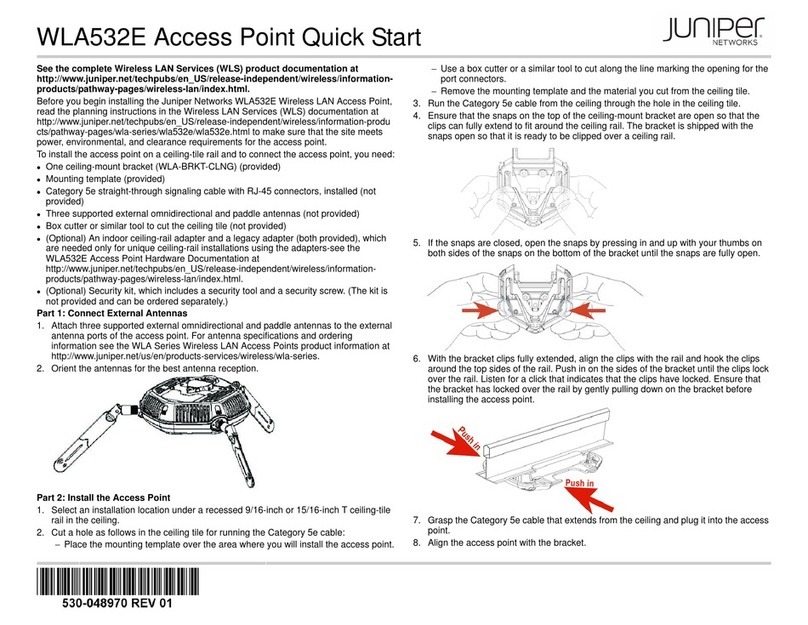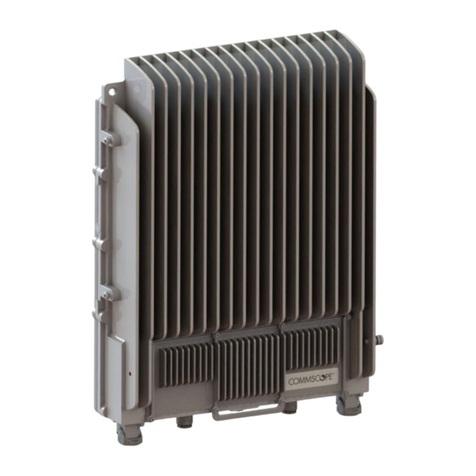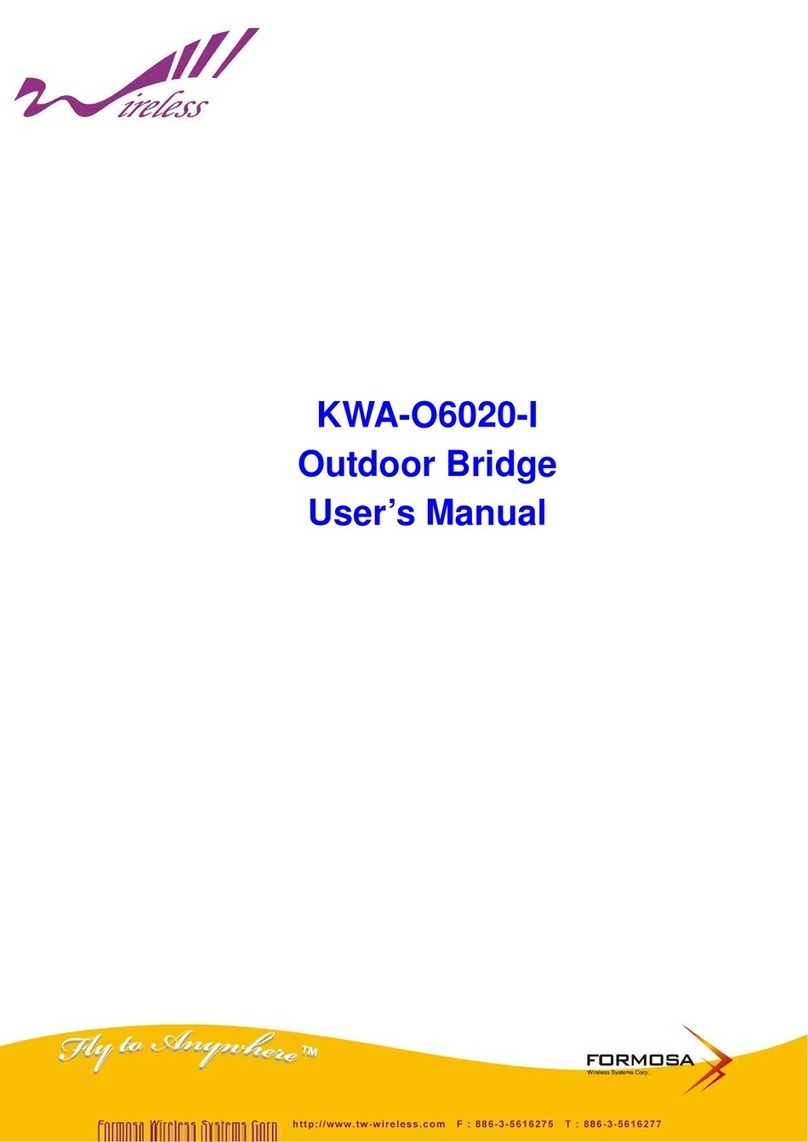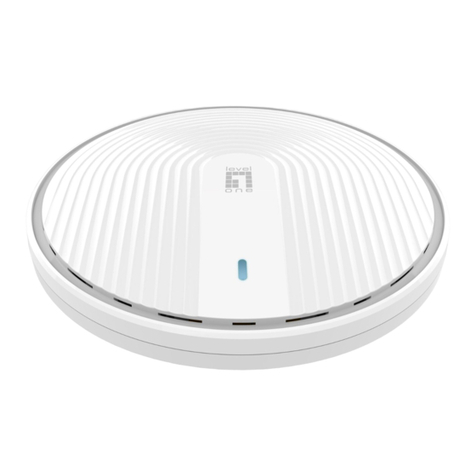Telrad CPE8100 User manual

Page 1
CPE8100 Outdoor CPE
Quick installation guide V1.0

Page 2
PLEASE READ THESE SAFETY PRECAUTIONS!
RF Energy Health Hazard
The radio equipment described in this guide uses radio frequency transmitters.
Although the power level is low, the concentrated energy from a directional
antenna may pose a health hazard.
Do not allow people to come in close proximity to the front of the antenna while the
transmitter is operating.
Protection from Lightning
Before connecting this instrument to the power line, make sure that the voltage of
the power source matches the requirements of the instrument. The unit must be
standards.
Disposal and Recycling Information
Pursuant to the WEEE EU Directive electronic and electrical waste must not be
disposed of with unsorted waste. Please contact your local recycling authority for
disposal of this product.
Reduction of Hazardous Substances
This CPE is compliant with the EU Registration, Evaluation, Authorization and
Restriction of Chemicals (REACH) Regulation (Regulation No 1907/2006/EC of the
European Parliament
and of the Council) and the EU Restriction of Hazardous Substances (RoHS) Directive
(Directive 2002/95/EC of the European Parliament and of the Council).
CE Conformance Declaration
Marking by the above symbol indicates compliance with the Essential Requirements of the
R&TTE Directive of the European Union (1999/5/EC). This equipment can meet the following
conformance standards:
•EN 60950/22 - Product Safety
•EN301489 EN301908 EN62311 - EMC requirements for radio equipment
This device is intended for use in all European Community countries.
Federal Communication Commission Interference Statement
This equipment has been tested and found to comply with RSS-192 and 197 of the Industry
Canada Rules. This equipment also complies with the limits for a class B digital device,
pursuant to ETSI EN 301 489-1 and Part 15 of the FCC Rules. These limits are designed to
provide reasonable protection against harmful interference in a residential installation. This
equipment generates, uses and can radiate radio frequency energy and, if not installed and
used in accordance with the instructions, may cause harmful interference to radio
communications. However, there is no guarantee that interference will not occur in a
particular installation. If this equipment does cause harmful interference to radio or
television reception, which can be determined by turning the equipment off and on, the user
is encouraged to try to correct the interference by one of the following measures:
•Reorient or relocate the receiving antenna.

Page 3
•Increase the separation between the equipment and receiver.
•Connect the equipment into an outlet on a circuit different from that to which the receiver
is connected.
•Consult the dealer or an experienced radio/TV technician for help.
This device complies with Part 15 , Subpart E of the FCC Rules. Operation is subject to the
following two conditions:
•This device may not cause harmful interference, and
•this device must accept any interference received including interference that may cause
undesired operation
Any unauthorized modification or changes to this device may void the user’s authority to
operate this device.
Furthermore, this device is intended to be used only when installed in accordance with the
instructions outlined in this manual. Failure to comply with these instructions may also void
the user’s authority to operate this device and/or the manufacturer’s warranty.
The grantee is not responsible for any changes or modifications not expressly approved by
the party responsible for compliance. Such modifications could void the user’s authority to
operate the equipment.
FCC Radiation Exposure Statement
This equipment complies with FCC radiation exposure limits set forth for an uncontrolled
environment. This equipment should be installed and operated with minimum distance 50 cm
between the radiator and your body.
This transmitter must not be co-located or operating in conjunction with any other antenna or
transmitter.
Industry Canada statement
This device complies with RSS-192 & RSS-197 of the Industry Canada Rules. Operation is
subject to the following two conditions:
•This device may not cause harmful interference, and
•this device must accept any interference received, including interference that may cause
undesired operation.
Ce dispositif est conforme à la norme CNR-192 & CNR-197 d'Industrie Canada applicable aux
appareils radio exempts de licence. Son fonctionnement est sujet aux deux conditions
suivantes: (1) le dispositif ne doit pas produire de brouillage préjudiciable, et (2) ce dispositif
doit accepter tout brouillage reçu, y compris un brouillage susceptible de provoquer un
fonctionnement indésirable.
Users can obtain Canadian information on RF exposure and compliance from the Canadian
Representative:
Nick Dewar
Nick.Dewar@Telrad.com

Page 4
Table of Contents
1.
OVERVIEW
................................................................................................................................................5
USER INTERFACE SPECIFICATION .....................................................................................................5
2.
GETTING STARTED
................................................................................................................................5
DEVICE LOGIC CONNECTION .............................................................................................................6
INSTALLING OUTDOOR UNIT (ODU) –POLE MOUNT.......................................................................7
INSTALLING OUTDOOR UNIT (ODU) –WALL MOUNT ......................................................................7
GROUNDING .......................................................................................................................................8
2
LED DISPLAY
...........................................................................................................................................9
RF SIGNAL ADJUSTMENT ..................................................................................................................9
3
MANAGING CPE DEVICE
...................................................................................................................10
WEB LOGIN......................................................................................................................................10
DEVICE STATUS ................................................................................................................................11
4
FAQ AND TROUBLESHOOTING
....................................................................................................... 11

Page 5
1.
Overview
CPE8100 is a high performance LT E CPE (Customer Premises
Equipment) product designed to enable quick LT E service
deployment to the remote customers. It provides high data
throughput and networking features to end users who need both
bandwidth and roaming capabilities in the certain area.
User Interface Specification
Model
Description & User Interface
CPE8100
- Panel antenna: B42_43 14dBi
- 1 RJ45 10/100/1000M LAN Port
- PWR, RUN, LAN, SIM, and LTE (1-6) LEDs
- 48V/0.5A PoE supply, ODU Power <12 Watts
- Dimensions: 203 mm (L) × 203 mm (W) × 76 mm (D)
- Weight: 3 Kg
2.
Getting Started
1) Packing list
Upon receiving the product, please unpack the product package carefully. Each product is
shipped with the following items:
Table 2-1 Packing List
Outdoor CPE Products
Quantity
ODU unit 1
PoE adapter 1
Power cord
1
Mounting brackets 1
PC Ethernet Cable 1
Quick User Guide
1
If you find any of the items is missing, please contact our local distributor immediately.
2) Unpacking the Equipment
Table 2-1 lists all the standard parts that are supplied in your LT E CPE Unit Installation
Package. Please take the time to unpack the package and check its contents against this list.

Page 6
3) Installing the Equipment
Device Logic connection
For outdoor CPE product, it is suggested that the CPE device be installed in a shaded area to
avoid direct sun light exposure which may cause over heat in certain extreme weather
condition. The CPE should be properly grounded for proper protection against lighting or
power surge.
To power on the device, the outdoor CPE must use a 48V PoE integrated DC power supply
adapter. The power adapters can operate in 100-240V AC range and therefore can be used
in different country. Once the device is powered up, the user should wait for about 2 minutes
before the device becomes operational. For CPE with the RUN LED indicator, a slowly
flashing light indicates the system has completed the startup procedure.
To connect PC, LAN switch or other type of IP device to the CPE product, the user should use
standard CAT5 Ethernet cable and connect to the appropriate LAN port. Once connect the
CPE LAN LED indicator should come on.

Page 7
Installing Outdoor Unit (ODU) – Pole Mount
Installing Outdoor Unit (ODU) – Wall Mount
Note: The wall screws and screw anchors are not part of the package. Recommended
screw size minimum 50mm length and 6-8mm diameter.

Page 8
Header Connection:
Grounding
Make sure that the installation of the outdoor unit, antenna and cables is performed in
accordance with all relevant national and local building and safety codes. Even where
grounding is not mandatory according to applicable regulation and national codes, it is
highly recommended to ensure that the outdoor unit and the antenna mast are grounded and
suitable lightning protection devices are used so as to provide protection against voltage
surges and static charges. In any event, Telrad is not liable for any injury, damage or
regulation violations associated with or caused by installation, grounding or lightning
protection.
The Grounding screw is located on the lower part at the back of the unit (see Figure below).
Use 10 AWG cable for grounding.

Page 9
Connect one of a grounding cable to the grounding screw and firmly tighten the grounding
screw. Connect the opposite end of the grounding cable to a good ground(earth) connection.
2
LED Display
LED Indicator
Function
Description
PWR Power Indicator Green Color – Device is powered on
RUN System Run Indicator Fast Blinking – Device is rebooting
Slow Blinking – Device is in normal operation
LAN LAN port status Solid Green –LAN port is up
Blinking Green – LAN data activity in progress
SIM SIM Card Indicator Light is on – SIM Card Error
RF (5 LEDs) RF Signal Strength 5 level signal strengths indication by 5 green LEDs
RF Signal Adjustment
After the CPE outdoor unit has installed, the direction of antenna’s azimuth and pitch angle
needs to adjust for the best signal strength. In near line of sight condition, the CPE will have
the best signal when the antenna is directly pointing the base station.
User can adjust the holder to change the direction and angle of the antenna while observing
the RF LED on the outdoor unit which indicates the signal strength.

Page 10
3
Managing CPE Device
CPE8100 is a user-friendly LTE CPE, and very easy to configure and setup. Subscribers can
just connect the device to their computer or home switch/router and the device is ready to
provide Internet Services.
WEB Login
It is a preferred to setup the CPE using a Web browser from a local PC connected to device
LAN port. The user should ensure that the connected PC have acquired IP address via DHCP
from the device. After IP connectivity is established between the PC and CPE device, the
user may launch a Web browser and specify http://192.168.254.251 in the address bar. A
window will pop up requesting password. Input the user login password and then click the
“Log in” button. After successful log on, the default home page of the WEB GUI interface will
appear. Note that the default user password is “admin”.

Page 11
Device Status
Once the user is logged in, the following window device status window will be prompted for
viewing. It contains both the system information, networking and device information
configured for the device.
For further configuration instructions, please refer to CPE8100 user manual.
4
FAQ and Troubleshooting
1)
My PC cannot connect to the CPE.
Re-plug the PC Ethernet cable and check if the PC LAN connection is up or showing
activity.
Check if the PoE power adapter LED is on. If it is not, check the power cord and make
sure it is connected properly. Also verify that the AC power supply is available.
If the PC LAN shows no activity and PoE adapter LED is off but the power cord is
connected properly and there is AC supply, then it is likely the PoE adapter is
damaged. Please contact distributor to obtain replacement part.
2)
My PC cannot acquire IP from the CPE.

Page 12
First check if the NIC is up and working properly. Then check the PC NIC configuration
and make sure the DHCP is enabled.
Open the MS-DOS window, enter “ipconfig /release” and “ipconfig /renew” commands
and see if PC can obtain IP correctly.
If the problem persists, please contact the operator or distributor for further diagnose.
3)
My CPE networking is not working properly.
You may want to check if the LT E connection is up and running properly. You can do
this by login the WEB GUI and check the Interface Info page.
You may want to perform a factory reset and see if the problem is being corrected.
You can do this by log into the WEB GUI using “admin” password and perform restore
the unit to default factory setting.
If the problem cannot be corrected by factory reset, please contact the operator or
distributor for further diagnose.
4)
I forget the login password and like to reset the unit to factory default.
Please contact the operator or distributor and give them the IMEI of the unit. The
operator or distributor can issue you a RESET password for you to enter in the WEB
login window.
After the unit is reset to factory default, you can login using the default password.
Other manuals for CPE8100
1
Table of contents
Other Telrad Wireless Access Point manuals
